Raglan Castle | Visit Amazing Welsh Castles
Raglan Castle stands in Monmouthshire, South Wales. It is one of the last true medieval castles built in Britain. Construction started in the 15th century, making it later than many other Welsh castles.
It features both military defences and Renaissance-influenced comfort. It is known for its large hexagonal keep, moat, and grand gatehouse. Today, it remains a popular site for visitors interested in medieval history and architecture.
Quick Facts
Location: Raglan, Monmouthshire, Wales
Type of Castle: Late medieval fortified manor house
Date Built: Began in the 1430s
Builder: Sir William ap Thomas and his descendants, including the Earls of Worcester
Key Features: Great Tower (Hexagonal Keep), moat, grand gatehouse, Renaissance gardens
Historical Period: Late Middle Ages into Tudor and Stuart periods
Dog Friendly: Dogs are allowed on leads
Managed by: Cadw (Welsh Government’s historic environment service)
Brief History
The castle began as a high-status home in the 1430s. Sir William ap Thomas, a Welsh nobleman, started its construction. His son, William Herbert, expanded the castle into a major fortress by the mid-15th century. The Herberts became the Earls of Pembroke, making Raglan a political and social centre in Wales.
In the 16th century, the Somerset family inherited the castle. They modernised it, adding Renaissance features such as large windows and formal gardens. By the 17th century, Raglan Castle had become a luxurious country house, reflecting wealth and status rather than pure defence.
During the English Civil War (1642–1651), Raglan was a Royalist stronghold. In 1646, Parliamentary forces besieged the castle for over two months. After the garrison surrendered, the castle was deliberately damaged (slighted) to prevent further use. It has remained a ruin since.
Features and Layout
The castle combines defensive structures with luxury living spaces. The layout reflects its development from a stronghold to a stately residence.
The most striking feature is the Great Tower, also known as the Hexagonal Keep. It stands in a large moat with a causeway. Originally, the moat was filled with fish for food supplies during sieges.
The gatehouse remains largely intact. It features decorative carvings, tall towers, and once held an iron portcullis. The main entrance leads into a large courtyard, surrounded by domestic buildings, stables, and storage areas.
Visitors can explore the Fountain Court, which was used for formal gatherings. The Long Gallery, now roofless, once displayed paintings and fine tapestries. A Great Hall sits nearby, used for feasts and entertainment.
One well-worn staircase shows centuries of footfall. This human detail remains visible today.
Did You Know?
Raglan Castle had early examples of Renaissance gardens. These included terraces and water features, which were rare in Britain during the 16th century.
Images
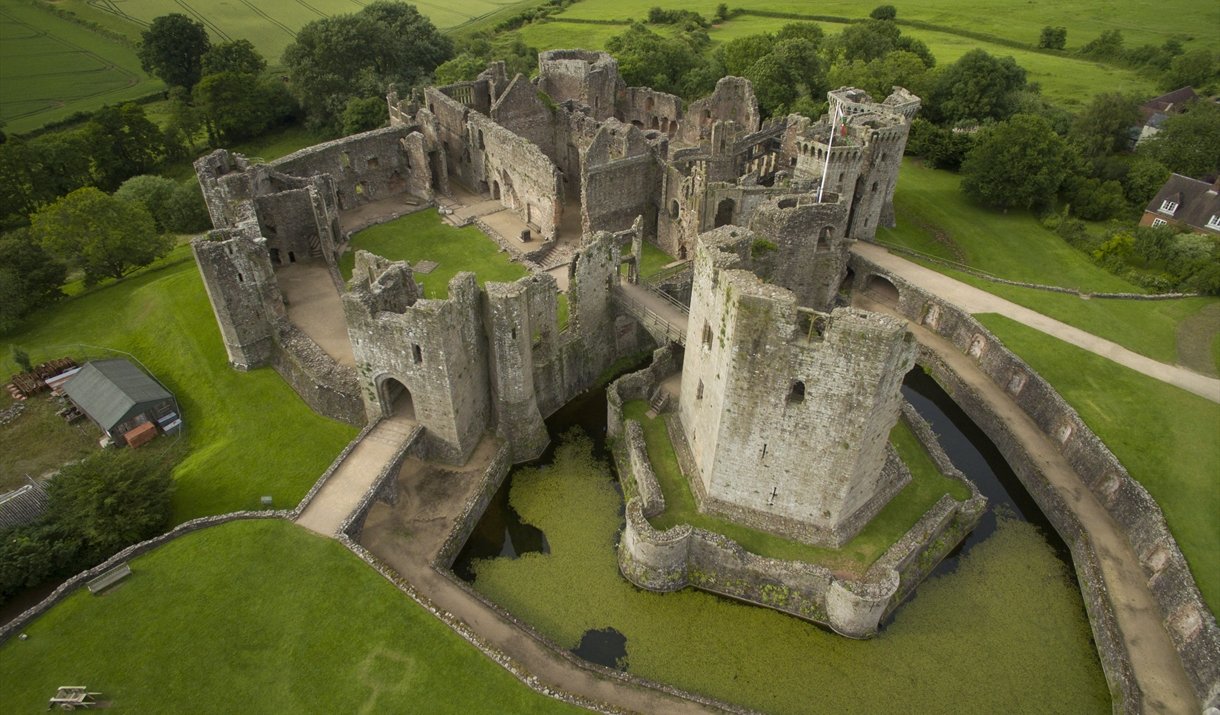
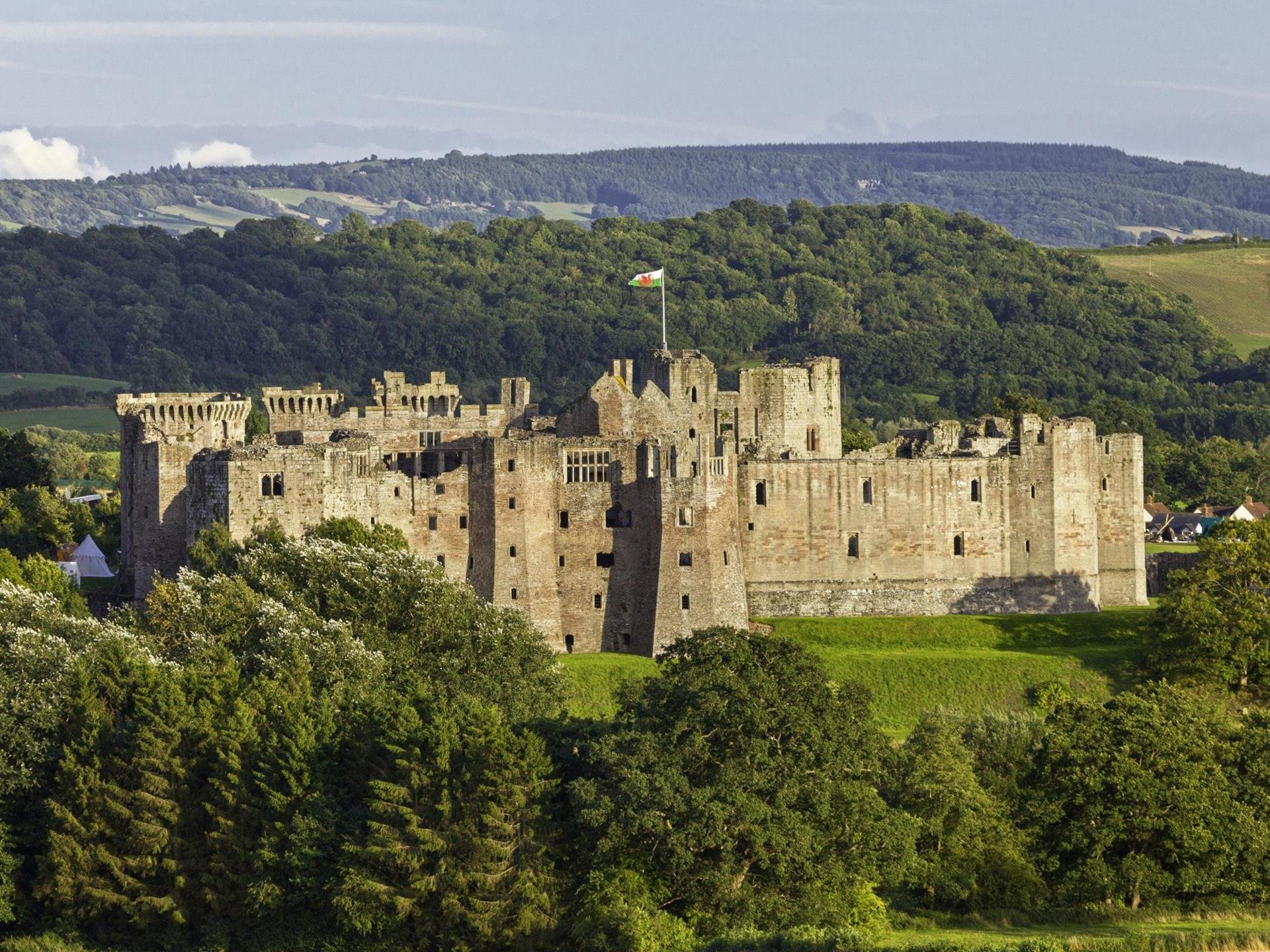
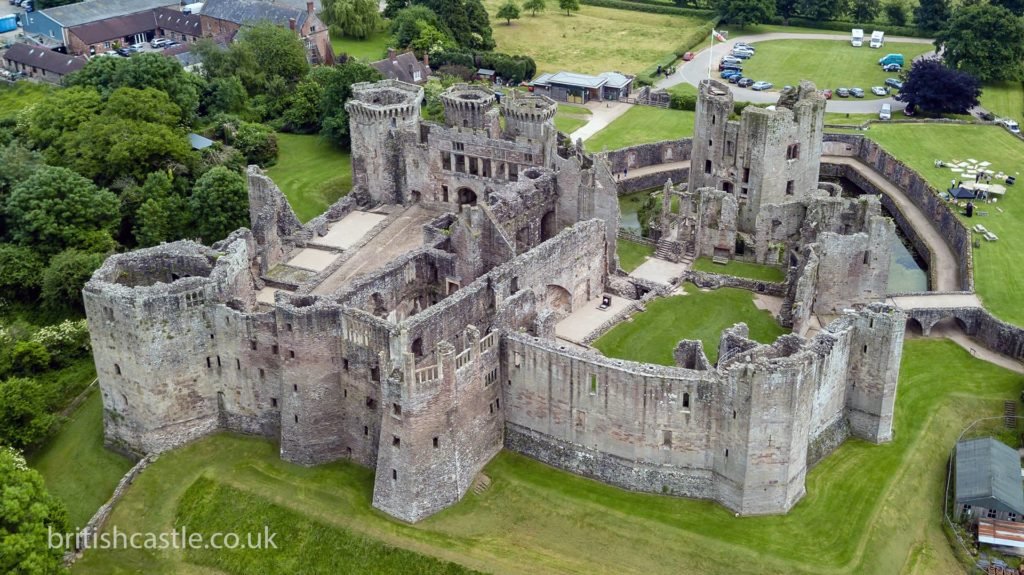
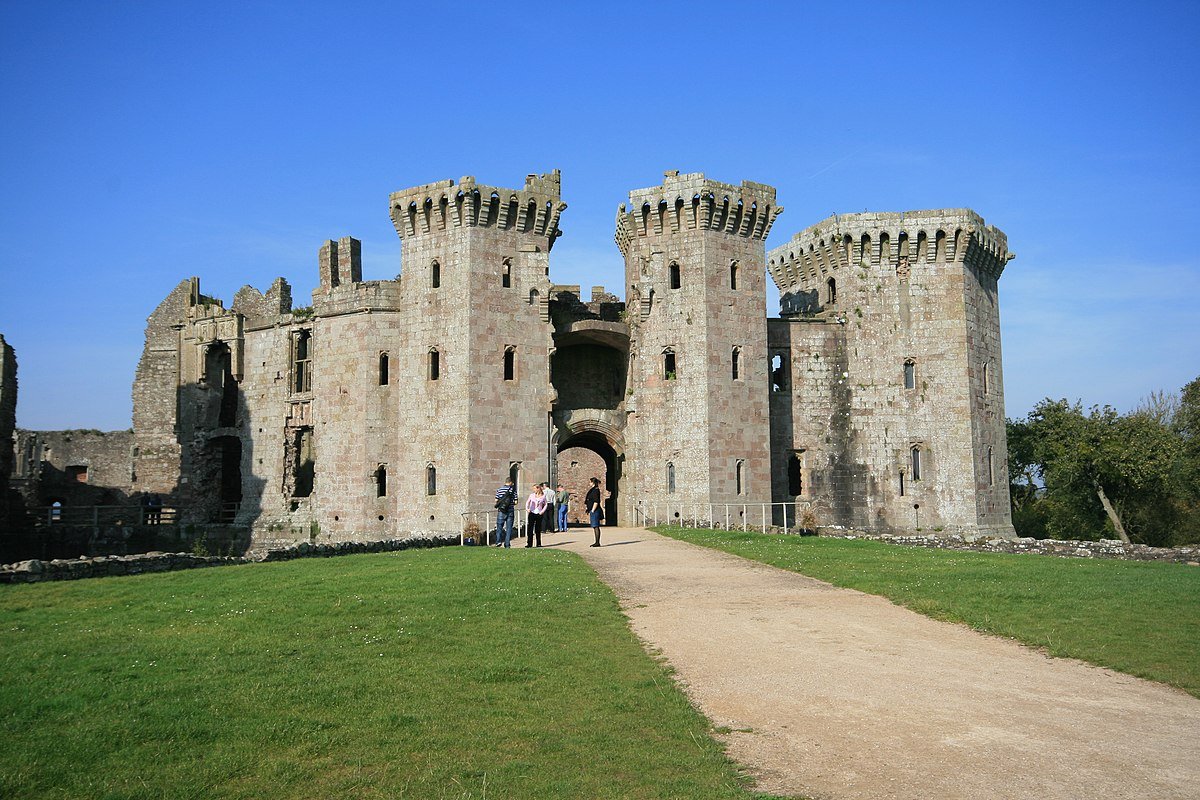
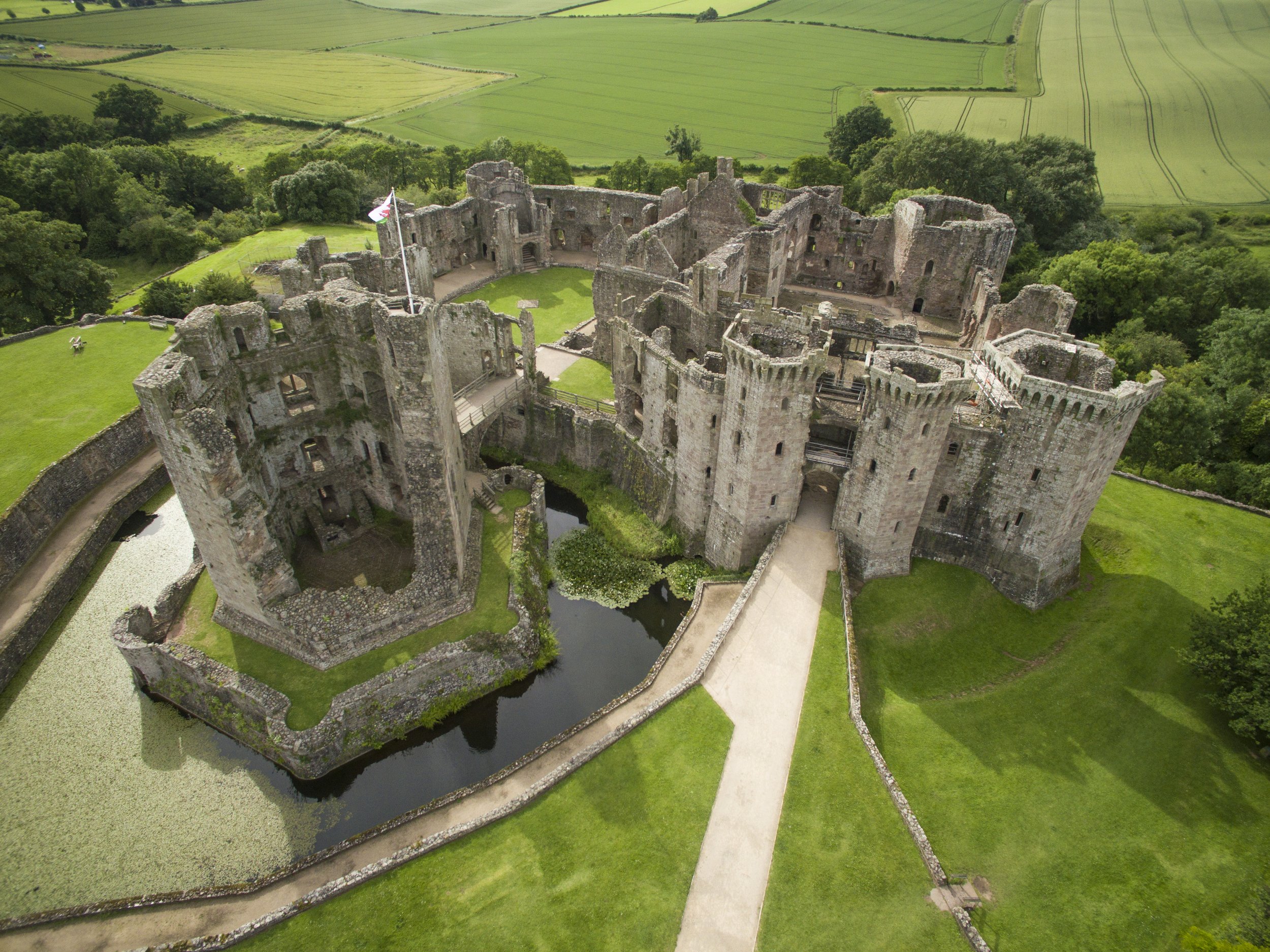
Legends and Stories
This castle has inspired several local legends. One story tells of a hidden tunnel beneath the Great Tower. According to local guides, this tunnel supposedly allowed secret escape during the Civil War siege. No archaeological evidence supports this tale, but it remains popular with visitors.
Another story involves the castle’s reputed hauntings. Reviews on TripAdvisor mention sightings of a “grey lady” wandering near the moat. Some suggest this figure could be linked to the castle’s turbulent Civil War history.
In recent times, some visitors have shared photos online showing orbs or unusual lights within the Great Hall. These reports appear mostly in visitor accounts rather than official historical sources.
Visiting
Always check Cadw for opening times.
Here’s everything you need to plan your visit:
Opening Times
March–June & September–October: 09:30–17:00
July–August: 09:30–18:00
November–February: 10:00–16:00 Monday–Saturday; 11:00–16:00 Sunday
Closed: 24, 25, 26 December and 1 January
Admission & Tickets
Adults: £10.50
Seniors (65+): £9.40
Juniors (5–17) / Students (with ID): £7.30
Family (2 adults + up to 3 children): £33.60
Under 5s: Free
Disabled visitors + companion: Free entry
Blue Light Card / Armed Forces / Veterans: 10% off in-person (not online)
Directions
Address: Raglan Castle, Castle Road, Raglan, Usk NP15 2BT
By car: From A40 via Raglan signposts. On-site free grass car park for approx. 120 cars
By bus: Bus stop in Raglan village ~10 min walk along steep lane
By train: Nearest stations are Abergavenny (~9 miles) or Newport (~19 miles)
Facilities
Toilets (including accessible and baby‑changing)
Picnic benches and tables
Gift shop
Portable induction loop / hearing assistance
EV charging points
Free Cadw Wi‑Fi
On‑site café ~300 m away (not run by Cadw)
Accessibility
Terrain includes lawns, gravel, cobbles; moderate difficulty
Some wheelchair/buggy access on ground floor only
Great Tower reachable by spiral stone stairs; dogs not allowed inside upper floors
Dog Policy
Dogs on short leads allowed on ground‑floor areas
Water bowls provided onsite
Not permitted in towers or café
Visitor Detail
One well‑worn spiral staircase inside the Great Tower still bears centuries of footfall, serving as a tangible connection to its past inhabitants.
Nearby Attractions
Raglan Farm Park
Ideal for families with young children. Offers petting areas, indoor play zones, and seasonal farm events.
The Dell Vineyard
A local vineyard providing tours, wine tastings, and occasional live events, perfect for a relaxing afternoon.
St Cadoc’s Church
A Grade II* medieval parish church notable for its 13th–14th century origins and the Herbert/Beaufort chapel, closely connected with the castle's history.
Monmouth Castle & Regimental Museum
Located about 6 miles away, this features castle ruins and a museum dedicated to the Royal Monmouthshire Royal Engineers.
Monnow Bridge
Only surviving fortified river bridge with gate tower in Britain, a unique medieval structure in nearby Monmouth.
Clytha Castle & Bettws Newydd
A romantic 18th‑century folly castle near Raglan, along with a medieval church, ideal for a scenic detour.
Visitor Tips
Plan to spend at least 2 hours exploring the castle and its grounds.
Wear comfortable walking shoes as surfaces include grass, gravel, and cobbles.
Dogs are welcome on leads in most outdoor areas; bring waste bags.
Picnics are allowed within the grounds; several picnic benches are available.
Download the Cadw app for audio guides and site information.
The best photography spots include the moat by the Great Tower and the Gatehouse courtyard.
Arrive early during summer months to secure a parking space.
Combine your visit with nearby Monmouth Castle or St Cadoc’s Church for a full day out.
The small on-site gift shop offers local crafts and guidebooks.
Card payments accepted, but some mobile signals are weak—prepare accordingly.
FAQs
-
Most visitors spend between 1.5 to 3 hours at the site, depending on interest in the historical details and walking pace.
-
Some areas are accessible on the ground floor, but many upper sections require climbing stone stairs. The Cadw access guide recommends checking ahead if you have mobility needs.
-
Cadw occasionally offers guided tours during special events. Otherwise, you can explore independently with information boards and the Cadw mobile app.
-
Yes, dogs on short leads are welcome in most areas except inside towers and the upper floors. Water bowls are available on-site.
-
There is a small café near the car park (not operated by Cadw). Nearby options include local pubs in Raglan village and further dining choices in Monmouth or Usk.
Wrapping it Up
This castle is a well-preserved example of a late medieval fortress with later Renaissance influences. It offers a unique combination of military features and stately architecture. The site provides a clear view into the changing role of castles during the late Middle Ages and Tudor periods. Visitors can explore its Great Tower, moat, formal courtyards, and remains of luxury accommodation. Its connection to significant historical events, such as the English Civil War, adds depth to any visit. The castle is managed by Cadw and provides good facilities for a comfortable visit, with nearby attractions making it ideal for a full day out in Monmouthshire.
Sources
Cadw Official Site
Provided accurate information on history, layout, opening times, ticket prices, facilities, and access details.
https://cadw.gov.wales/visit/places-to-visit/raglan-castleCadw Access Guide
Detailed accessibility notes, dog policies, and parking facilities.
https://cadw.gov.wales/raglan-castle-access-guideVisit Monmouthshire
Verified local attractions, transport links, and visitor amenities.
https://www.visitmonmouthshire.com/things-to-do/raglan-castle-cadw-p1502721Wikipedia
Used for factual verification of historical dates, builder information, and architectural features.
https://en.wikipedia.org/wiki/Raglan_CastlePassports and Adventures Blog
Confirmed visitor experience details, family suitability, and opening times.
https://passportsandadventures.com/dragon-hunting-adventure-at-raglan-castle/Castle Guy YouTube
Used for anecdotal information on legends and hidden tunnel claims.
https://www.youtube.com/watch?v=9qJtaP_HaDoMonmouthshire Must-Do Attractions
Assisted in identifying nearby visitor sites and useful local tips.
https://www.visitmonmouthshire.com/explore/raglan/must-do-raglan


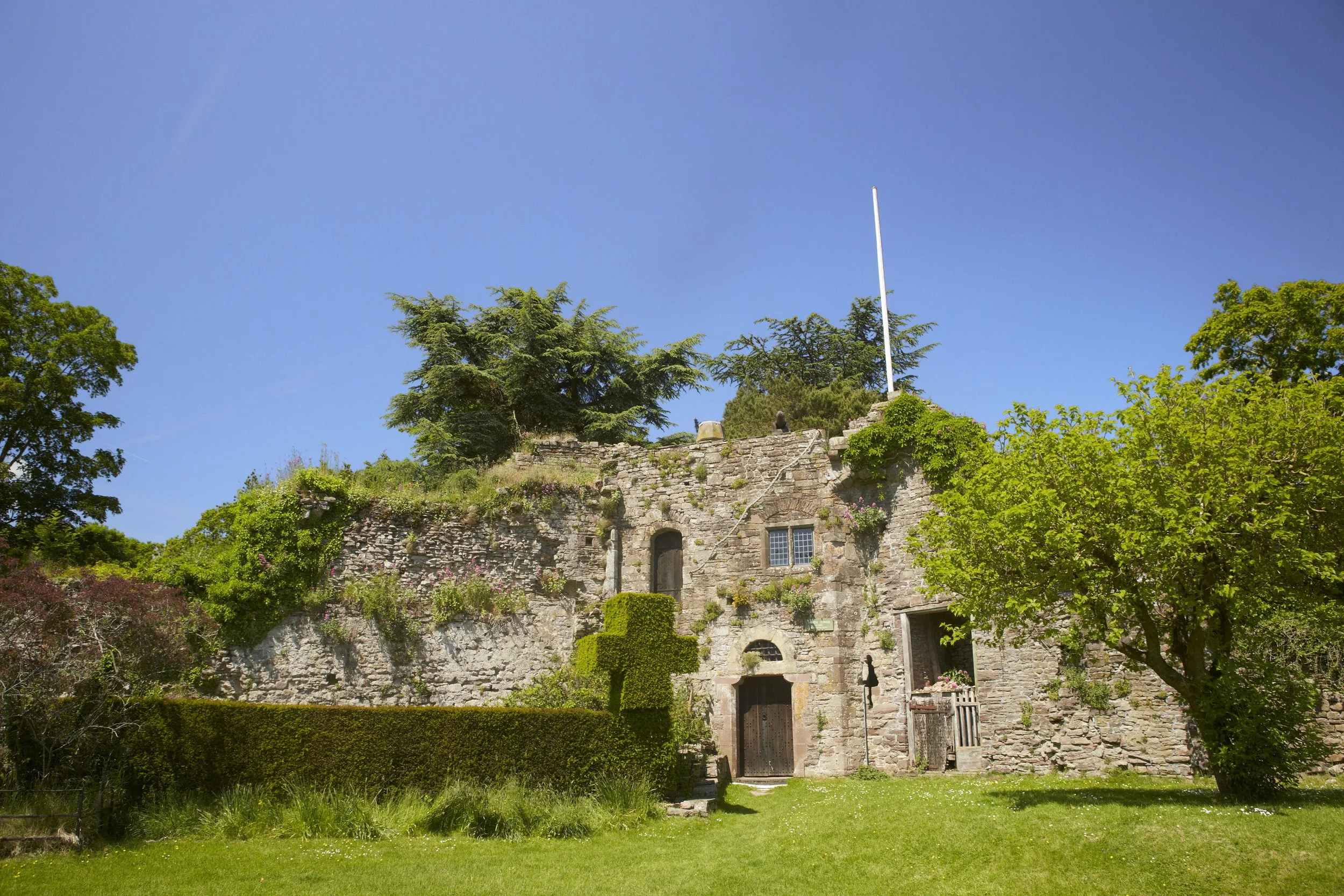
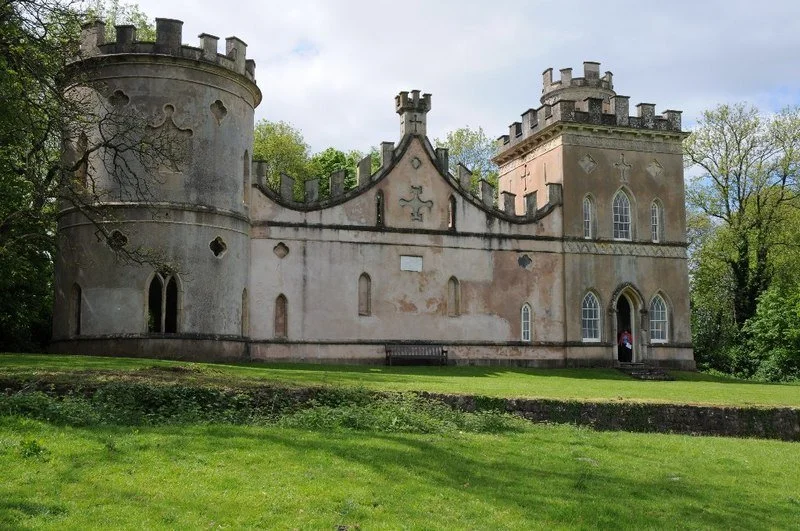
Cardiff Castle is a medieval and Victorian-era site in the centre of Cardiff, the capital of Wales.